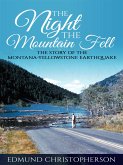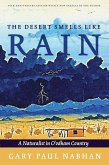Desert Night Life: Survival Strategies Under the Stars unveils the hidden dramas of arid ecosystems after sunset, where creatures like kangaroo rats and pallid bats defy extreme heat, water scarcity, and predators through astonishing adaptations. The book’s central theme—resilience in fragility—highlights how these species stabilize their environments through interconnected survival tactics.
Readers discover how kangaroo rats survive without drinking water by metabolizing seeds, while sidewinder snakes navigate darkness using heat-sensing facial pits. Such adaptations aren’t just biological marvels; they inspire sustainable innovations, from beetle-inspired water harvesters to energy-efficient buildings modeled after termite mounds.
Blending field research with Indigenous ecological knowledge, the book reveals how predator-prey dynamics, like the owl-fox competition for rodents, sustain biodiversity. It also confronts urgent threats: climate change disrupts delicate activity patterns, while light pollution and habitat fragmentation endanger species.
Chapters progress from explaining core adaptations to analyzing human impacts, culminating in conservation strategies rooted in biomimicry and traditional practices. Unique in its dual lens of Western science and Indigenous stewardship, the work offers vivid narratives—like tracking desert foxes via GPS or documenting shifting bloom times in night-blooming plants—to make complex concepts relatable.
By framing deserts as hubs of evolutionary ingenuity rather than barren wastelands, Desert Night Life bridges ecology and human innovation. It appeals not only to nature enthusiasts but to anyone seeking lessons in resilience from Earth’s most extreme survivors.
Readers discover how kangaroo rats survive without drinking water by metabolizing seeds, while sidewinder snakes navigate darkness using heat-sensing facial pits. Such adaptations aren’t just biological marvels; they inspire sustainable innovations, from beetle-inspired water harvesters to energy-efficient buildings modeled after termite mounds.
Blending field research with Indigenous ecological knowledge, the book reveals how predator-prey dynamics, like the owl-fox competition for rodents, sustain biodiversity. It also confronts urgent threats: climate change disrupts delicate activity patterns, while light pollution and habitat fragmentation endanger species.
Chapters progress from explaining core adaptations to analyzing human impacts, culminating in conservation strategies rooted in biomimicry and traditional practices. Unique in its dual lens of Western science and Indigenous stewardship, the work offers vivid narratives—like tracking desert foxes via GPS or documenting shifting bloom times in night-blooming plants—to make complex concepts relatable.
By framing deserts as hubs of evolutionary ingenuity rather than barren wastelands, Desert Night Life bridges ecology and human innovation. It appeals not only to nature enthusiasts but to anyone seeking lessons in resilience from Earth’s most extreme survivors.









